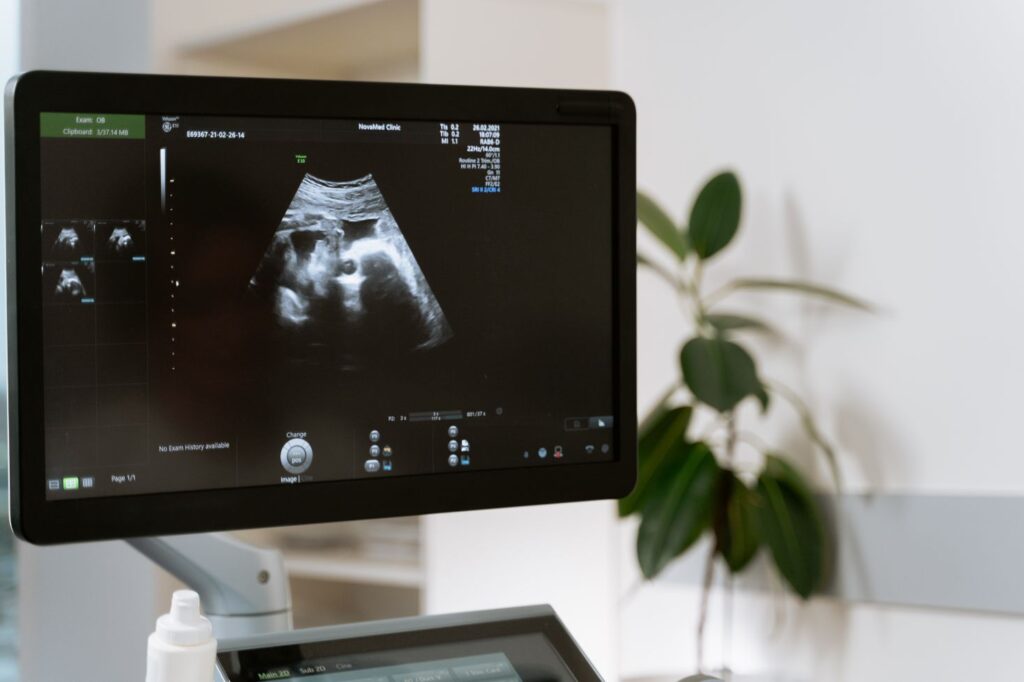Okay, mama, let’s be honest. That moment you realize your little bean is nestled in head-down, ready for their big debut? It’s pure relief mixed with a whole lot of excitement. But getting to that point can be a rollercoaster, full of waiting, wondering, and maybe even a little worry. I’m here to break it all down for you, mama-to-mama.
Table of Contents
When The Head-Down Shift Happens (And When It Doesn’t)
Picture your cozy little womb as your baby’s own personal swimming pool. They’ve got lots of space for flips and kicks early on! Most babies naturally start settling into that head-down position sometime in your third trimester, often between weeks 28 and 34. But, just like everything in parenting, there’s no strict timetable.
Some babies are early birds, flipping into position well before the final weeks. Others are true fashionistas, making a dramatic entrance at the very last minute. And guess what? That’s totally okay! Factors like how much room your baby has, their size, and your own body’s unique shape all influence their timeline.

Types of “Head-Down” and What They Mean
Turns out, “head-down” isn’t a one-size-fits-all situation. Here’s what those doctor words really mean:
- Vertex Presentation: This is the rockstar position! Baby’s head is down, chin tucked close, ready to navigate things smoothly. Think of it as your little one doing pre-birth yoga.
- Occipito-Posterior Position: Still head-down, but baby’s facing your belly instead of your spine. We call this the “sunny-side up” baby. It can sometimes mean a longer labor, and maybe a bit more backache for you.
- Occipito-Anterior Position: The gold standard! Baby’s facing your back, all set for the smoothest slide into the world.
“Wait… Did That Just Happen?” – Signs Baby’s Flipped
You’re the expert on your body, mama, so you might just feel the shift! Keep an eye out for:
- Bump Change: Suddenly feeling like your belly dropped? Baby might have, too!
- Kicks Under the Ribs: Ouch! Those little feet poking you up high are a good sign.
- Breathe Easy: Less pressure on your ribs and lungs means more room for deep breaths.
- Doctor’s Confirmation: Ultrasounds are the behind-the-scenes peek, but even just feeling your belly, your OB or midwife can usually tell what position your little acrobat’s in.
Read: Pregnancy Miracle Review
Help! My Little Houdini Won’t Flip!
First, deep breaths. A lot of babies take their sweet time turning, and most end up head-down without any fuss. But, if you’re getting close to your due date and your little one’s still stubbornly bottom-down, here’s what to know:
- The Breech Talk: Babies with their bottoms or feet ready for delivery first are called “breech.” It’s not ideal, and your doctor will likely discuss options like a planned c-section for the safest delivery.
- Don’t Panic, Get Proactive: Talk to your doctor about safe ways to encourage your baby to turn. Think gentle exercises, strategic lounging positions, or even a little music played near your lower belly. It might be just the nudge they need!
- ECV: The Doctor-Assisted Flip: This is where your OB gently tries to turn the baby from the outside. It doesn’t always work, but it can be a great option.
Why The Head-Down Hustle Matters
It’s not just about tradition! There are real reasons why nature loves a head-first baby:
- Built for It: Babies’ heads are the biggest part of their bodies, designed to mold slightly for an easier journey down the birth canal.
- Safety First: Through generations, this position has proven to be the safest way for most babies to navigate the twists and turns of being born.
Read our review of Olly Prenatal Vitamins
You’re in This Together
The most important thing? Open, honest chats with your doctor or midwife. They’re there to monitor your baby, answer your questions, and help you navigate any twists and turns (pun intended!).
One Mama’s Story
“At 37 weeks, I was a wreck! Baby boy was comfy as could be, head up. But my midwife was amazing. We tried some gentle exercises, and a few days later, he flipped! I ended up with the natural birth I’d dreamed of.” – Jessica, mom of two
FAQs on Baby’s Position During Pregnancy
-
How late is too late for baby to turn?
Some babies flip even during labor! Everyone’s different.
-
Does head-down mean labor’s right around the corner?
Sometimes, but not always. Think of it as getting ready, not necessarily rushing out the door.













